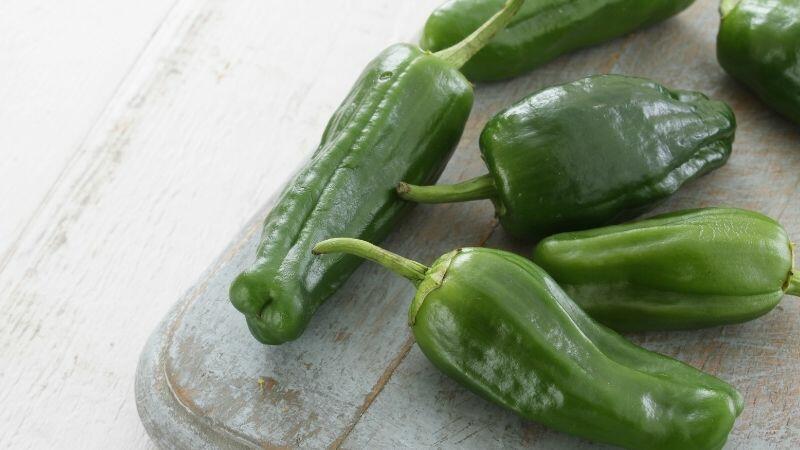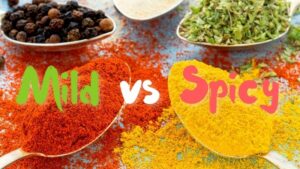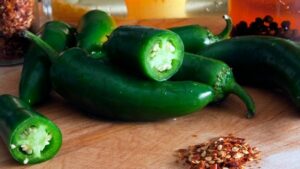If you’ve ever taken a bite of a spicy pepper and felt your mouth burn, you’ve experienced the Scoville scale firsthand. This method of rating spicy foods lets you know exactly how much heat you can expect from your next culinary adventure.
So what level of spiciness is actually considered “mild”? According to the Scoville scale, mild
In this article, we’ll explore the Scoville ratings for popular pepper varieties so you can find your perfect level of mild
- What the Scoville scale measures
- Examples of mild peppers and their SHU ratings
- How to increase your tolerance over time
- A handy
spice tolerance chart
Let’s turn up the heat on learning about mild
What is the Scoville Scale?
The Scoville scale measures the heat intensity of peppers and spicy foods. It ranges from barely noticeable heat to extreme, blow-your-head-off spiciness. The ratings are measured in Scoville Heat Units (SHU). The higher the number, the hotter the pepper.
Every pepper variety has been lab tested and assigned a specific number of SHU. For reference, a sweet bell pepper scores a 0, while the spiciest pepper in the world, the Carolina Reaper, tops out at over 2 million SHU!
Is Mild Spicy Under 1,000 SHU?
On the Scoville scale, a rating of 100 to 1,000 SHU is generally considered mild
Some examples of mild peppers include:
- Poblano: 1,000-2,000 SHU
- Anaheim: 500-2,500 SHU
- Jalapeño: 2,500-8,000 SHU
Peppers at the lowest end of this spectrum, like the poblano, impart just a hint of heat. As you move up towards 5,000 SHU, the jalapeño starts to show some
What is the Average Scoville Tolerance?
Every person’s sensitivity to spicy food is different. The average scoville tolerance in the United States is around 3,500 SHU. This means most Americans start to find a dish uncomfortably hot at around the upper end of the jalapeño pepper.
However, even within the U.S. there is a huge range of
Globally, countries like India, Thailand, and Mexico have the highest average scoville tolerances. Their cuisines incorporate many peppers at the top end of the Scoville scale.
Can You Increase Your Spice Tolerance?
Yes! Start slowly and work your way up. Just like exercising builds muscle, regularly eating mild peppers can desensitize your taste buds over time.
Aim to add a small amount of heat to each meal. Keep challenging yourself by using progressively hotter pepper varieties. Before you know it, you’ll be an expert
What’s the Max Spice Level for Humans?
So how much spicy heat can the average person actually tolerate before it’s too much? According to research, most people start to find food painfully hot at around 500,000 SHU.
At this intensity, your mouth feels like it’s literally burning. Your eyes water, your nose runs, and you start sweating uncontrollably. It’s nearly impossible to focus on anything besides the fiery sensation.
As you go above 500,000 SHU, the
Eating these ultra-hot peppers can cause serious side effects like vomiting, abdominal cramps, and even shortness of breath. Definitely not for the
While everyone’s tolerance varies, most people find 300,000 SHU is around the upper limit before the
Aim to stay under 100,000 SHU if you want spicy but not painfully hot cuisine. That’s around the heat level of a Cayenne pepper.
Spice Tolerance Chart
Use this chart as a guide to find your personal
| Scoville Range | Spice Level | Example Peppers |
|---|---|---|
| 0-700 SHU | No | Bell Pepper, Pimento |
| 700-3,500 SHU | Mild | Anaheim, Poblano |
| 3,500-15,000 SHU | Medium | Jalapeño, Serrano |
| 15,000-100,000 SHU | Hot | Cayenne, Tabasco |
| 100,000+ SHU | Very Hot | Habanero, Ghost Pepper |
Frequently Asked Questions
Are some people born with a “spice hating gene”?
No, but some people are naturally more sensitive to capsaicin, the chemical that triggers spiciness. With gradual exposure, anyone can adapt to enjoy hotter foods. Start with small amounts of mild salsa or Thai dishes before working up to extreme heat levels.
What should you do if you eat too much spicy food?
First, don’t reach for water! It spreads the spicy oils around. Dairy products like milk and yogurt do a better job washing the heat away. Starchy foods like rice and bread can also help absorb some of the excess capsaicin.
The Takeaway on Mild Spicy
If you’re new to spicy cuisine, start in the 100-1,000 SHU range to give your tastebuds a chance to adapt. Look for mild peppers like poblanos and Anaheims or dishes labeled “mild” at restaurants. With regular exposure, even the biggest wimps can work up to a jalapeño or beyond on the Scoville scale!





